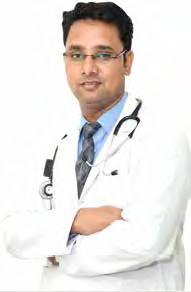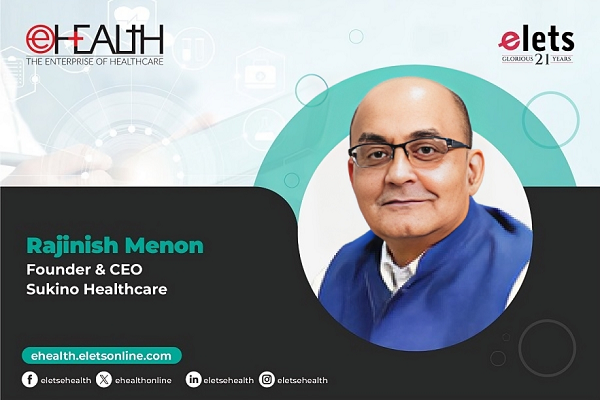

Latest reports from WHO suggests that there will be 22 million new cases of cancer every year in the next two decades. With more than 60 percent of the cancer cases in Africa, Asia, Central and South America- India is on high alert.
Rachita Jha finds out more

The International Agency for Research on Cancer (IARC), the specialized cancer agency of the World Health Organization reveals an estimated 14.1 million new cancer cases and 8.2 million cancer-related deaths occurred in 2012, compared with 12.7 million and 7.6 million five year ago. The cause of concern is the geographic spread of cancer, as the report suggests that more than half of all cancers and cancer deaths in 2012 occurred in less developed regions of the world, and these will only increase by 2025. For a developing country like India, the economic burden of cancer is a major hurdle in fighting the disease. There are limited cancer hospitals, lack of specialist doctors and the overall treatment cost is very high compared to other diseases. In addition to these, the prolonged chemotherapy and its side effects take a toll on the patient “ physical, emotional and economical.The best foot forward to strengthen our fight against cancer is to create a robust and effective early detection, diagnosis and treatment protocol.

We are detecting cancers much more easily than it was possible few years back and by 2025 cancer will be second leading cause of death from a non-communicable disease.

Dr Amol Akhade, Medical Oncologist,International Oncology Services at
LH Hiranandani Hospital
India “ High Alert
The flagship government initiative of National Cancer Control Programme states that In India it is estimated that there are 2 to 2.5 million cancer patients at any given point of time, of this 0.7 million new cases coming every year and nearly half die every year. The reason of high mortality rate is that two-third of the new cancers are presented in advanced and incurable stage at the time of diagnosis, thus leaving very little room for the hospital or doctor to help the patient in recovery. Reflecting on the rate of incidence of cancer in India DrAmolAkhade, Medical Oncologist, International Oncology Services at Dr. LH Hiranandani Hospitalsays, The most important trend in our country is that the number of cancer patients in our country is increasing.
As per the national cancer registry data last published in 2008, in Mumbai city itself there are about 30,000 new cases diagnosed. This was the situation considering past data with limited survey constraints; the status today should be four to five times larger and this is for a single city only. Thus, the numbers of the entire country will be much more.Also,this data does not coverthe remote areas which have not been included till now. Thus it is evident thatthe numbers are growing manifold.
The major factors accounting for the rise in cases are changes in lifestyle, pollution, longevityand better medical diagnostic services available fordetection of cancer due to improved imaging modalities.DrAkhade adds, Many hospitals and diagnostics centres today have MRI and CT, and the future is not far when even PET scan will be available easily. We are detecting cancers much more easily than it was possible few years back and by 2025 cancer will be second leading cause of death from a non-communicable disease. The speculation of the number of cases being much higher in India also stems from the fact that the awareness on the prevention and diagnosis is not high as compared to cardiac ailments. Hence it is necessary to emphasise the importance of screening tests and regular health check-ups in cancer similar to heart diseases.

Treatment has to be comprehensive. The expertise includes collaborative team work of surgical oncologist, medical oncologist and radiation therapist.
Dr Neeraj Mehta, Regional Head, International Oncology Cancer Centre, Dr L H Hiranandani Hospital
Integrated Approach
Unlike other forms of diseases, for cancer it is preferred to follow a protocol- based treatment in a tertiary care hospital. This ideally involves the team of medical oncologist, surgical oncologist and radiation oncologist. Keeping the status of cancer for a particular patient, a unique treatment plan is drawn out in consultation to follow a protocol-based approach involving all three modalities that ensures consistency and comprehensiveness of treatment leading to better outcomes.
Due to absence of speciality hospitals and trained oncologists in many parts of the country, patients have to either make dowith whatever is available or migrate to cities where cancer hospitals are available. At least 70 percent of the cases are already in the advanced stage of cancer when they reach any tertiary care hospital. Although the cancer might be picked up early, due to inappropriate treatment given to the patient, by time it reaches our hospital the case is advanced stage and then we can only control and not cure the patient,says DrAkhade. Cancer therefore demands a connected line of treatment from various levels in healthcare delivery chain. He adds, We need better healthcare which is not on ly at the tertiary access but also is connected by channels via primary and secondary care centers to ensure the patient is taken through the chain of care.
International Oncology Services has taken many initiativesand the aim is to widen the spread of cancer care across tier 2 cities This has been embedded in our plans to ensure that not only is the infrastructure improved across all parts of the country but also to pick up cases early and treat them so as to reduce morbidity and mortality.
Thus an integrated approach is very important in any strategy that aims to screen, diagnose and prevent cancer, especially for a country like India wherein the healthcare delivery system largely has primary and secondary care available for larger sections of the society
 The latest trends in radiation oncology include the arrival of Intensity-Modulated Radiation Therapy (IMRT) and Image-guided radiation therapy (IGRT) technology,the most recent is the RapidArc therapy
The latest trends in radiation oncology include the arrival of Intensity-Modulated Radiation Therapy (IMRT) and Image-guided radiation therapy (IGRT) technology,the most recent is the RapidArc therapy
Dr Wasim Phoplunkar, Radiation Oncologist, International Oncology Services at LH Hiranandani Hospital
Importance of Protocol Treatment
The developed countries are moving towards protocol-based or evidencebased mode of treatment for cancer. This has proven to be more effective and reduces the side effects of unwanted exposure to radiation as well. Elaborating on the same Dr Neeraj Mehta, Regional Head, InternationalOncology says, Treatment has to be comprehensive.The expertise includes surgical oncologist, medical oncologist and radiation therapist. This usually involves that following a surgery, prescribed chemotherapy, medication and drugs will start and based on the assessment of the patient condition, radiation therapy will begin. These are steps of a protocol oriented therapy that is critical for patient recovery. Cancer care does not end post operation. For example if there is a tumour or a lump, even post surgeries there are chances that some cells go into circulation and grow.
So after surgery the treatment continues with chemotherapy and times supplemented by radiotherapy, and so the awareness needs to be there.These protocol based treatment guidelines should be a joint decision taken by medical, surgical and radiology oncologists together. In the developed countries, since last 30 years cancer is treated only in tertiary care centers and only using protocol based treatment.
The reasons for the absence of such a practice in India includes, lack of co-ordination among doctors treating the patient, lackof referrals to comprehensive cancer care hospitals, existence of cross-speciality practice wherein the doctor continues patient care despite his limited expertise. Dr Mehta suggests, In totality, a specialist treatment costs much less, compared to an unorganized and insufficient treatment which will lead to relapses and more cost and intervention later. The disease has to be diagnosed, so that adequate treatment and medication is planned and providedaAnd the course of treatment is addressed at an early stage itself. Our assessment is unique for a patient based on his stage of cancer instead of a straight-jacketed treatment for all.
In malignancy, ,the first line of treatment is the best chance to help the patient. Delays in correct treatment only deteriorates the condition of the patient thus reducing the chances of survival and adding costs. The idea is to take protocol treatment to the grassroots.
Decentralized healthcare delivery
Many cities in India do not have good treatment facilities available in a government set up. And there should be more cancer hospitals especially in smaller towns and cities to address the growing cases of cancer in these areas. Due to the constraints of distance, travel and cost, taking treatment in a specialized hospital in metro cities is unviable for many patients. To make cancer care affordable and accessible in a government healthcare model, the key is to bring-in decentralization. The government however has taken many initiatives on cancer care in India, apart from setting-up of new cancer hospitals in tier-2 cities; they also have launched many schemes including the national cancer control programmeto address the growing disease burden of cancer in the country, says DrAkhade. The amount of funding done by the government is significant, if implemented properly it may have a huge impact in treatment of cancer patients in India.
In the next ten years, we are sure there will be a better balance of cancer care in the rural and urban India, he adds. This model will be very effective to achieve screening, diagnosis and preventive care initiatives to identify patients in their early stages of cancer itself, thus better coping mechanisms of treatment and cure can be availed.
 Trends in treatment modalities
Trends in treatment modalities
Treatment is now becoming affordable with early diagnosis, and there are new drugs which are much more effective and have reduced side effects. The new advances that have happened in cancer treatment across the world have happened in chemotherapy, whereas surgical treatments have been largely same over the years. Maximum evolution has been seen in chemo-drugs, where new age targeted drugs have come up. As the name suggests these are targeted only at cancer cells and not the surrounding cells so the side effects are much less and deliver better results in not just disease control rate but also disease cure rates, informs Dr Akhade.In addition, newer radiation-based techniques that have come up, the beam is now more precise such as the rapid arc machine in which the radiation is targeted so side effects are lower, the results are better and compliance of treatment is improved. The supportive care in form of growth factor boosters and targeted drug therapy is also a fast advancing field, there has been an improvement in the efficacy of cancer treatment to such an extent that now we are able to offer chemotherapy even to elderly patients that was extremely high risk earlier, he adds. The latest treatment modalities have tablets available for certain forms of cancer such liver and kidney, for those patients that cannot take injectionable therapy.
This helps in compliance and the costs are less. Dr. WasimPhoplunkar, Radiation Oncologist, International Oncology Services at Dr. LH Hiranandani Hospital says, The latest trends in radiation oncology include the arrival of Intensity- Modulated Radiation Therapy (IMRT) and Image-guided radiation therapy (IGRT) technology, the most recent is the rapid arc and we were the first hospital to install this facility in Mumbai. The main advantage lies in the precision of the device as usually the patient might move or the organs might move during the treatment and so a larger area is selected for radiation exposure to ensure the tumour is on target. This is not required in the rapid arc as the real time images are being captured during the treatment and overall treatment time is reduced to 2-3 minutes so that the chances of patient motion or organ motion are lessto ensure the results are better and side effects much reduced. Overall, cancer care is becoming personalised and unique depending on the stage of cancer.
In addition, there are advanced research studies being conducted to know more on the biology of cancer especially molecular pathways. Elaborating on the arrival of new drugs DrAshish Bakshi, Medical Oncologist, International Oncology Services at Dr. LH Hiranandani Hospital says, Because of recent advances in molecular research on cancer cells we now know that there are certain targets or there are certain molecular pathways that are involved in a particular cancer and we if are able to block those pathways with the help of newer drugs there are improved outcomes of the treatment. So targeted therapies have become new development and every year there are 8-10 molecules that have proved revolutionary in the way we treat cancer.
 More of hematooncological diseases are becoming curable and we do bone marrow transplantation for these malignancies and also treat nonmalignant condition.
More of hematooncological diseases are becoming curable and we do bone marrow transplantation for these malignancies and also treat nonmalignant condition.
Dr Ashish Bakshi, Medical Oncologist, International Oncology Services at LH Hiranandani Hospital
Blood cancer
Blood related malignancies although are not a common form of cancer in terms of incidence; however it is a curable form of cancer. However, most of the times, by the time the patient reaches a tertiary care centre, he has already undergone some form of incorrect treatment as the awareness is absent. International Oncology Services has taken the initiative to launch a blood clinic at Dr. LH Hiranandani Hospital to address these special group of patients. Haemato- oncologyis a highly specialisedfield because the blood related malignancies are fairly commonly seen in the country and an ordinary physician or a general practitioner cannot handlethese malignancies. More so because nowadays, the field has specialised so much so that there are targeted genetic tests available for these diseases both in terms of diagnosis as well as monitoring out the disease, says DrBakshi. There is lack of trained doctors equipped to treat blood cancers. In addition, in cases of lymphoma or multiple myeloma if it relapses requires a stem cells transplant that requires facility of bone marrow transplant. It was much needed that for any bloodrelated diseases that maybe benign such as low platelets due to idiopathic thrombocytopenic purpura (I.T.P.) or deadly diseases like acute myeloid leukaemia (a form of blood cancer)a single facility should cater to all such diseases.
We have therefore launched a blood clinic wherein any patient suffering from any form of blood related disease can approach us and get best-in-class treatment, informs Dr Neeraj Mehta. The advances and affordability of bone marrow transplant is also an advantage for the patients suffering blood cancer. More of hemato-oncological diseases are becoming curable and we do bone marrow transplantation for these malignancies and also non-malignant conditions. Because of the increasing affordability of Indian population, more and more people can go for the bone marrow transplant and secondly, earlier we used to find difficulty in finding donor but nowadays with donor registry available we are able to identify donorsmore easily and as a result transplants are becoming more common. Similarly umbilical cord transplant are also becoming routine thing in our practice, informs DrBakshi.
Targeted therapy is the future |
| Targeted therapy is the future Type of cancer patients regular at the hospitalWe at Wockhardt Hospital, Nagpur, mostly see cancer of head & neck due to the rampant use of tobacco and related products in our country; this is followed by cancer of lung, breast, gastrointestinal tract, liver, and blood cancer.Cancer treatment facilities available at the hospitalWe offer surgery, chemotherapy, hormonal therapy, management of cancer pain along with help for handling psychological issues. In addition, we also keep our patients in close follow up post treatment, where we closely monitor a patients condition without giving any treatment until symptoms appear or change. |
 Some recent advances
Some recent advances
With the advances in diagnostic and therapeutic modalities the incidence of cancer is on a rising trend also more and more number of patients is diagnosed at an early stage so that curative treatment can be delivered.
FDG-PET CT Scan: The use of FDG PET-CT scan (2-Flouro-deoxyglucose) in diagnosing the cancer and to know the spread is latest and now the imaging modality of choice for almost all types of cancer except for Leukaemia (Blood Cancer). PET-CT scan can detect primary tumour as well as metastatic sites without any exposure to radiation.
Bone Scan: Fluoride bone scan is also increasingly being used in cancer of solid organs for detecting spread of cancer in bones.
Chemotherapy: There is great advancement in chemotherapeutic drugs over the decade and lot of newer generation drugs called as Targeted therapies are now available
Radiation Therapy: As in chemotherapy major advances in radiation therapy also occurred over the decade and now more and more use of advance technologies are being used to avoid harmful effects of radiation to non cancerous part of body.
Dr Amol Dongre Consultant Oncologist, Wockhardt Hospitals, Nagpur
Future Positive
Although statistics reveal a grim picture of cancer tide in India, the collaborative efforts among government, hospitals, doctors and organisations such as International Oncology Services are building groundwork for counter-attack to the disease menace. Taking a hub and spoke model, International Oncology Servicesplans to extend reach of cancer treatment and diagnosis to smaller towns and cities that lack these facilities in order to fulfill a larger goal of bringing the best of cancer care to India. Empowered by a dynamic team of experts dedicated for the cause, collaboration and partnerships amongst hospitals, doctors and research organisations we will make this vision a reality in near future.
Be a part of Elets Collaborative Initiatives. Join Us for Upcoming Events and explore business opportunities. Like us on Facebook , connect with us on LinkedIn and follow us on Twitter , Instagram.












